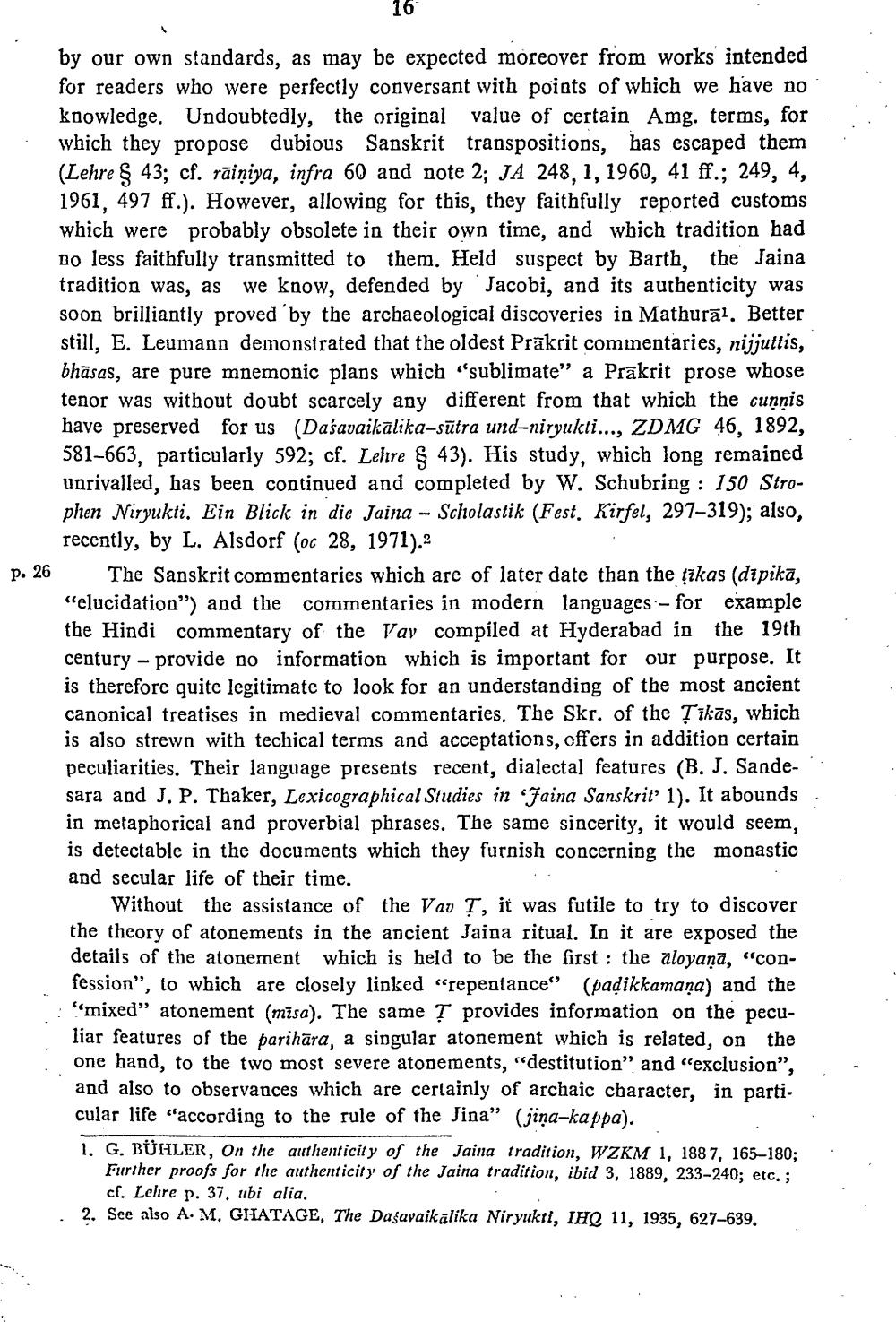________________
16:
.
by our own standards, as may be expected moreover from works intended for readers who were perfectly conversant with points of which we have no knowledge. Undoubtedly, the original value of certain Amg. terms, for which they propose dubious Sanskrit transpositions, has escaped them (Lehre § 43; cf. rāiņiya, infra 60 and note 2; JA 248, 1, 1960, 41 ff.; 249, 4, 1961, 497 ff.). However, allowing for this, they faithfully reported customs which were probably obsolete in their own time, and which tradition had Do less faithfully transmitted to them. Held suspect by Barth, the Jaina tradition was, as we know, defended by 'Jacobi, and its authenticity was soon brilliantly proved by the archaeological discoveries in Mathurāl. Better still, E. Leumann demonstrated that the oldest Prakrit cominentaries, nijjuttis, bhāsas, are pure mnemonic plans which "sublimate" a Prakrit prose whose tenor was without doubt scarcely any different from that which the cunnis have preserved for us (Daśavaikālika-sūtra und-niryukti..., ZDMG 46, 1892, 581-663, particularly 592; cf. Lehre § 43). His study, which long remained unrivalled, has been continued and completed by W. Schubring : 150 Strophen Niryukti. Ein Blick in die Jaina - Scholastik (Fest. Kirfel, 297–319); also,
recently, by L. Alsdorf (oc 28, 1971). p. 26 The Sanskrit commentaries which are of later date than the çikas (dipika,
"elucidation") and the commentaries in modern languages - for example the Hindi commentary of the Vay compiled at Hyderabad in the 19th century - provide no information which is important for our purpose. It is therefore quite legitimate to look for an understanding of the most ancient canonical treatises in medieval commentaries. The Skr. of the Tikās, which is also strewn with techical terms and acceptations, offers in addition certain peculiarities. Their language presents recent, dialectal features (B. J. Sandesara and J. P. Thaker, Lexicographical Studies in Jaina Sanskrit 1). It abounds. in metaphorical and proverbial phrases. The same sincerity, it would seem, is detectable in the documents which they furnish concerning the monastic and secular life of their time.
Without the assistance of the Vav T, it was futile to try to discover the theory of atonements in the ancient Jaina ritual. In it are exposed the details of the atonement which is held to be the first : the aloyaņā, "confession”, to which are closely linked “repeatance“ (padikkamaņa) and the "mixed” atonement (mīsa). The same s provides information on the peculiar features of the parihāra, a singular atonement which is related, on the one hand, to the two most severe atonements, “destitution" and "exclusion", and also to observances which are certainly of archaic character, in parti. cular life "according to the rule of the Jina" (jina-kappa).
-
1. G. BÜHLER, On the authenticity of the Jaina tradition, WZKM 1, 1887, 165-180;
Further proofs for the authenticity of the Jaina tradition, ibid 3, 1889, 233-240; etc.;
cf. Lehre p. 37. ubi alia. . 2. See also A. M. GHATAGE, The Dasayaikalika Niryukti, IHQ 11, 1935, 627–639.




